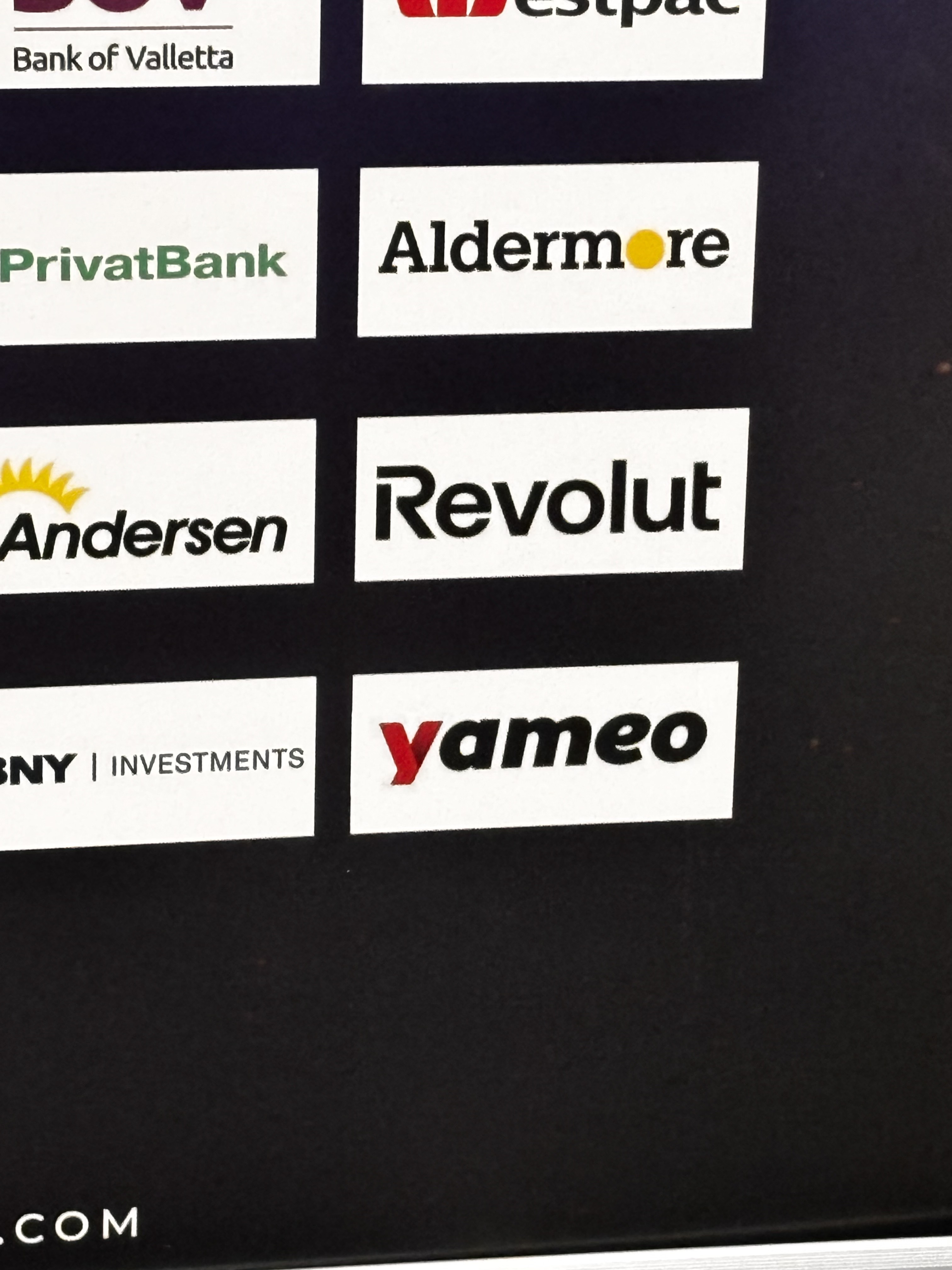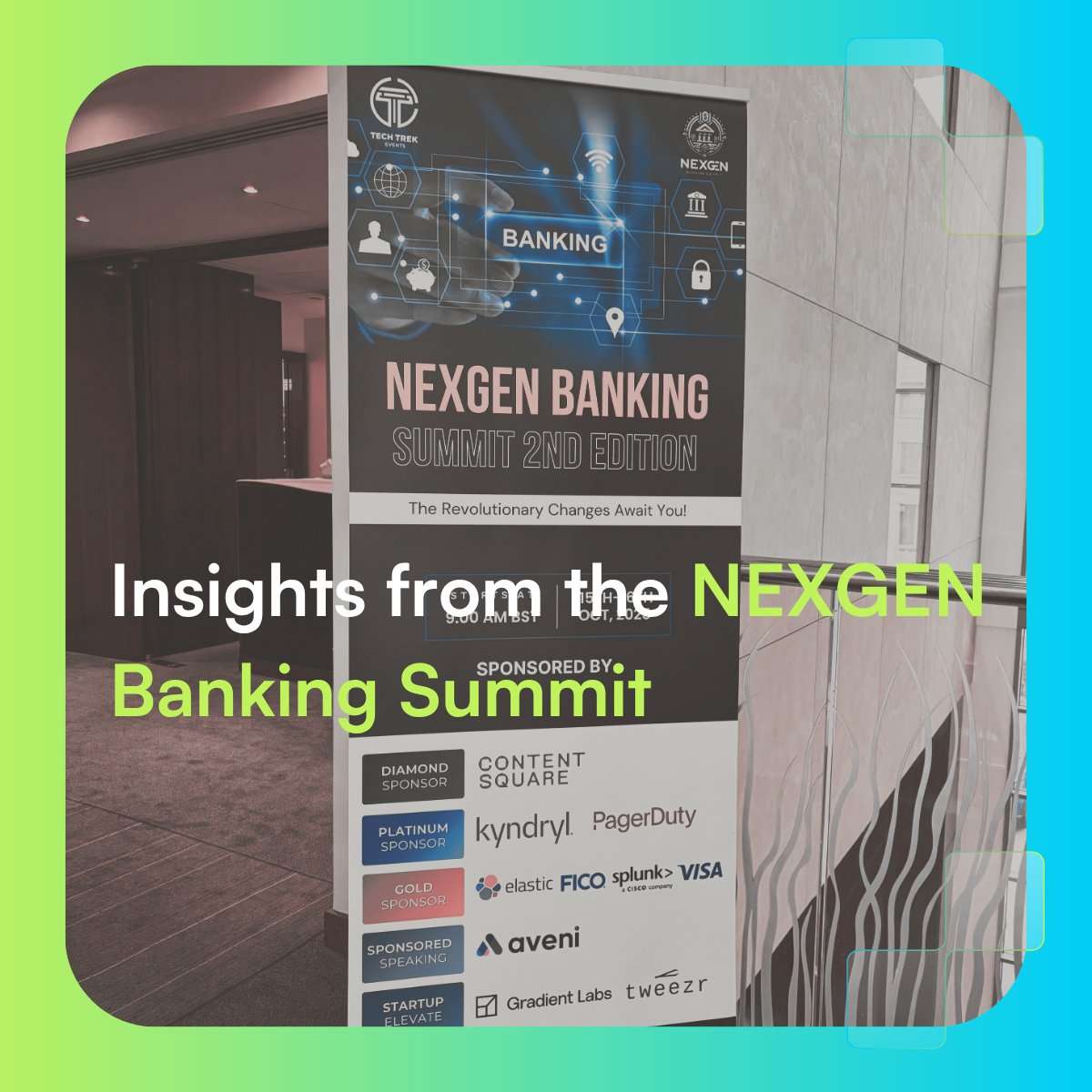When I stepped into the NEXGEN Banking Summit in London mid-October, I wasn't entirely sure what to expect. Would it be another event filled with buzzwords and theoretical frameworks? Spoiler alert: it wasn't. What I discovered instead were real stories from some of the UK's biggest banking institutions: Lloyds Banking, HSBC, Standard Chartered, and Barclays - all grappling with the same fundamental challenge: how do you make banking feel personal again in an increasingly digital world?
The answer, it turns out, keeps circling back to video.

The Personal Touch Problem
Here's what struck me most during my conversations: every single organisation I spoke with was wrestling with the paradox of modern banking. Customers want the convenience of digital services-the ability to sort out their finances at 11 PM in their pyjamas. But they also crave something banking apps alone can't deliver: that human connection, the reassurance of talking to someone who gets it, the trust that comes from seeing a real person on the other end, especially when they are uncertain about a financial decision.
One of the attendees on behalf of HSBC put it brilliantly: "We've become incredibly efficient at transactions, but we're losing the art of conversations." That sentence stayed with me because it captures exactly what's at stake here. Banking isn't just about moving money around, it's about life's biggest moments. Buying your first home. Starting a business. Planning for retirement. These aren't transactions; they're milestones that deserve a human touch.
The Challenges Everyone's Facing (But Nobody Wants to Talk About)
Throughout the summit, I noticed patterns emerging in the challenges these institutions shared. Let me break down what I heard:
1. The Integration Nightmare
Almost every bank mentioned this. They've got legacy systems that were cutting-edge... in 2005. Now they're trying to layer video banking capabilities on top of infrastructure that wasn't designed for it. It's like trying to add a smart home system to a Victorian manor—theoretically possible, but practically painful.
Standard Chartered highlighted their struggle with creating seamless handoffs between digital channels. A customer might start on mobile banking, need help, click for video support, and then... hit a wall because the systems don't talk to each other properly. The result? Frustrated customers and advisors who spend more time fighting technology than helping people.
2. The Compliance Tightrope
Here's where UK banks face a particularly thorny challenge. The regulatory environment in Britain is, shall we say, robust. And rightly so—we're talking about people's money here. But it creates a unique tension when you're trying to innovate with video banking.
Barclays shared how they're navigating identity verification in video calls. How do you balance security with user experience? Make it too stringent, and customers abandon the process. Make it too lax, and you're opening yourself up to fraud. Plus, there's the ever-present question: where is this data stored, who can access it, and how long do you keep it?
The UK's data protection requirements add another layer. GDPR isn't just a checkbox exercise—it fundamentally shapes how you design video communication systems. Every bank I spoke with mentioned compliance as both a necessary safeguard and, frankly, a speed bump on the road to innovation.
3. The Staff Training Gap
This one surprised me, but in hindsight, it's obvious. Video banking requires a completely different skillset than traditional face-to-face or phone banking. Lloyds Banking talked openly about their advisors' struggle to adapt. It's not that their people aren't capable—they're dealing with lighting, camera angles, background settings, and the psychological shift of "performing" on video, all while trying to deliver expert financial advice.
One advisor apparently asked: "Do I need to wear the full suit if customers only see me from the chest up?" (For the record, the answer was yes. Professional standards and all that.)
UK-Specific Hurdles: Why British Banks Face Unique Challenges
The summit made it clear that UK banks aren't just dealing with generic banking challenges—they're navigating a specifically British set of complications:
The Branch Closure Backlash: Unlike some countries where digital-first banking has been embraced, the UK has seen genuine public outcry over branch closures. There's a political dimension here that banks in other markets don't face to the same extent. Video banking is positioned as a solution, but it's also viewed with suspicion as an excuse to close more branches. Banks need to get the messaging right: video enhances service, it doesn't replace human interaction entirely.
The Digital Divide: Here's an uncomfortable truth that came up repeatedly: not everyone in the UK is digitally savvy. HSBC pointed out that some of their most valuable customers—older demographics with significant assets—are precisely the ones who struggle most with digital adoption. How do you roll out video banking that serves both the tech-native 30-year-old and the 75-year-old who just figured out text messaging?
Competitive Pressure from Challengers: Monzo, Starling, Revolut—these digital-first banks are eating traditional banks' lunch with younger customers. The established players are feeling the heat to innovate faster while maintaining the trust and stability that built their reputations. Video banking is seen as a way to bridge that gap, offering personal service without the branch network overheads.
What Customers Will Expect in 2025 (Hint: It's More Than You Think)
The conversations at the summit painted a clear picture of where customer expectations are heading:
Instant Access Without Appointment Booking: The days of "let me check my calendar and call you back" are over. Customers expect to click a button and connect with an advisor within minutes, not days. It's the "Uber-ification" of banking services.
Context-Aware Conversations: When a customer connects via video, they expect the advisor to know who they are, what accounts they hold, and ideally, why they're calling. Starting from scratch every time is no longer acceptable.
Seamless Cross-Channel Journeys: This came up with every bank. A customer might research mortgages online, want to discuss options via video, complete paperwork digitally, and maybe visit a branch for the final signing. Each transition needs to feel effortless.
Personalisation That Actually Feels Personal: Generic advice isn't cutting it. Customers can get that from YouTube. What they're paying for—what they're staying loyal for—is advice tailored to their specific situation, delivered by someone who treats them as an individual, not account number 47295.
The Video In Person Solution: Connecting the Dots
After spending two days immersed in these challenges, I kept thinking: "This is exactly what we built Video In Person to solve."
Let me be specific about how:
Effortless Integration: Our platform is designed to work with existing banking systems, not replace them. We understand that ripping out infrastructure isn't an option for major banks. Video In Person acts as the connective tissue, enabling video communication without requiring a complete systems overhaul.
Built-In Compliance: We didn't treat compliance as an afterthought—it's baked into our architecture. From encryption to audit trails to data residency options, Video In Person is designed with UK regulatory requirements in mind. Banks can innovate without lying awake at night worrying about their next regulatory review.
Intuitive for Staff and Customers: The best technology is technology people don't have to think about. Our interface is clean and simple. Your advisors can focus on advising, not troubleshooting tech issues. And your customers? They click a link and they're in—no downloads, no account creation, no friction.
Flexible Deployment: Whether you want video embedded in your mobile app, available on your website, or accessed through a secure portal, Video In Person adapts to your architecture, not the other way around.
Scalability Without Compromise: Start with a pilot in one department. If it works (and it will), roll it out enterprise-wide. Our platform scales from dozens to thousands of concurrent video sessions without degrading quality or security.
The Real Question: Are You Ready for What's Next?
Walking out of the NEXGEN Banking Summit, I was struck by a realisation: the banks that will thrive in 2025 and beyond aren't necessarily the ones with the biggest budgets or the flashiest technology. They're the ones who remember that banking is fundamentally about relationships, and relationships require real human connection.
Video banking isn't just another channel to tick off your digital transformation checklist. It's the bridge between the efficiency customers demand and the personal service they're desperate for. It's how you retain customers who are one bad experience away from switching to a challenger bank. It's how you serve an ageing population without forcing them into apps they don't understand. It's how you differentiate when everyone's offering the same rates and the same products.
The institutions I met at the summit get this. They're not asking whether to invest in video communication—they're asking how to do it right. The challenges are real: legacy systems, regulatory complexity, staff training, customer adoption. But they're not insurmountable. They just require the right partner.
At Video In Person, we've been focused on solving exactly these problems. We built our platform specifically for organisations that need enterprise-grade security, regulatory compliance, and seamless integration, but delivered with the simplicity that both staff and customers deserve.
If the conversations I had in London are any indication, 2025 is going to be the year video banking moves from "nice to have" to "essential for survival." The question isn't whether your organisation will adopt video communication. It's whether you'll lead the change or scramble to catch up.
I know which side I'd rather be on.
So what are you waiting for? Schedule a demo meeting with one of our agents and together we will start working on a solution for your business!

